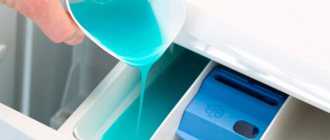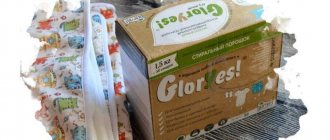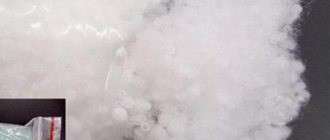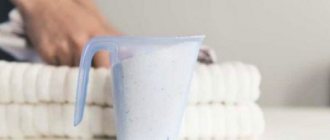How to wash a membrane in a washing machine How to wash things made from a membrane in a machine How to wash by hand How to wash a membrane jacket: drying and aftercare Why do you need impregnation for the membrane
High-quality membrane fabric is durable and comfortable. The synthetic fibers of the material are covered with a polymer film, which simultaneously allows the skin to breathe and keeps the cold out. In such a jacket you will not freeze, but you will not sweat inside, even if the physical activity is serious.
This fabric is used to make ski jackets, trekking suits, children's overalls, down jackets and other specialized clothing for sports and everyday life. High-quality things from the material are produced by such companies as Krokid and others.
Membrane clothing must be washed very carefully. There are several important nuances of washing at home, but you should not think that it is better not to wash such things at all. This is also wrong. In addition, a good wash will help increase the shelf life of the product.
Features of clothing with a membrane
The membrane material was invented back in 1969 by American inventors and was called Gor-Tex.
Currently, depending on the purpose, membrane clothing comes in several types:
- casual;
- professional;
- for active recreation (Gor-Tex Active).
Its design depends on the purpose of the clothing. Usually this is 2, 3 or 2.5 layers. The membrane itself, which is a thin film with micropores, is attached to the base or located between layers of fabric. The pores are very small, they do not let moisture in from the outside, but with great physical activity they easily remove sweat from the body to the outside.
A wear-resistant coating is used as the top layer, which is additionally treated with a special composition that repels water.
This type of outerwear has the following positive characteristics:
- does not allow moisture to pass through from the outside, but allows the skin to “breathe”;
- protects from wind;
- keeps warm;
- is light and durable.
Along with this, there are also disadvantages:
- High price
- Relatively short service life
- Special requirements for product care
Detergents for washing membrane fabrics
Choosing the right and high-quality membrane washing agent is very important. Using the first thing that comes to hand, you can simply ruin an expensive item.
A common question among owners of such things is: can the membrane be washed with regular powder? The answer is categorical - no, it will not work, the film does not tolerate sulfates and phosphates, which are present in large quantities in detergents of this type. In addition, the pores of the membrane will become clogged with powder particles, and it will lose its protective properties.
Recommended products
Removing odor from membrane clothing is somewhat difficult, since this fabric requires special care: it must be washed by hand and with special means.
But even with such care, the service life of this clothing is significantly reduced.
SmellOff against sweat odor
will help you This product is completely natural and does not cause an allergic reaction on the skin. Recommended:
- We clean things from visible dirt. In the case of membrane fabrics, it is better to remove dirt with damp cloths.
- Apply the product by spraying. Particular attention should be paid to areas where sweat is absorbed most often (armpits, back, neck). The product must be poured onto them for deeper absorption.
- After treatment, we leave the product for literally 2 hours (since the membrane dries very quickly) - the clothes become fresh and ready for use.
- The easiest way is to wash clothes with laundry soap. It dissolves well in water and removes dirt from the fabric. The soap is grated, and the resulting fine shavings are dissolved in water without any residue.
- Shampoo, for example, Salton Sport and Domal Sport. This is a certified cleaning product for sportswear with climate membranes. For one wash, the manufacturer recommends using 20-25 ml of liquid. You can buy them in sports stores, along with clothes.
- Special gel, for example, Denkmit Fresh Sensation. When washing in an automatic machine, it is poured into the dry powder compartment. This product does not damage the fabric and takes good care of the membrane. In addition, it gives clothes water-repellent properties.
- Nikwax tech wash liquid soap for membrane. An effective product that removes even heavy dirt and residues of other detergents. It is recommended to use in tandem with impregnation of the same series, strictly following the instructions.
- According to user reviews, gel-con for the membrane will only cope with minor stains and get rid of unpleasant odors.
Advice! If you do wash the membrane with powder or gel containing sulfates, do not despair. Treat it with aerosol impregnation and henceforth use only suitable products.
What should not be used for washing?
In addition to washing powder, the following products are prohibited:
- containing chlorine. They significantly expand the micropores of the membrane, as a result of which it retains moisture from the external environment worse. In addition, chlorine, even in the lowest concentrations, can dissolve water-repellent impregnation;
- any bleaches and stain removers. They act on membrane products in the same way as chlorine.
- You shouldn't use fabric softener either. They give things a pleasant smell, but degrade the quality of the membrane.
Advice! It is not necessary to wash the entire item; you can often wipe away stains with a sponge and laundry soap or dishwashing detergent.
Since membrane products require very careful handling, it is best to wash and tidy them yourself rather than take them to the dry cleaner. After all, the client has no way to track which product the dry cleaning staff uses. It will be very difficult to prove that the item was damaged.
Conclusion
Membrane clothing is not as difficult to care for as it seems at first glance. Tips and recommendations are written on the bottles of most specialized products, as well as on the clothing itself. The earlier a product is purchased, the more impregnation it requires.
In most cases, there are no difficulties when washing, ironing and drying. It is enough to follow simple conditions and perform all actions in accordance with the specified order. Then the properties are restored and preserved faster.
How to properly wash membrane clothes?
Contrary to existing myths, modern clothes with membranes must be washed. If this is not done, the pores will become clogged with dust and dirt, and the protective properties of such material will decrease.
Washing a jacket or other large item with a membrane can be done by hand or in a washing machine. But it has its own rules and features:
- Before washing, be sure to study the manufacturer's recommendations on the label.
- Use suitable detergent.
- Do not treat fabric with bleaches or stain removers.
- It is not recommended to soak clothes with a membrane.
- Wash at low temperatures, no more than 40°C. At high. temperatures, the pores of the membrane will simply stick together and it will stop working.
- Rinse thoroughly to ensure no streaks remain after drying.
- After washing, dry the product properly.
You also need to prepare your clothes: empty your pockets, remove small debris from them, fasten all buttons and zippers, unfasten the fur. To avoid damage to buttons and other fragile accessories, they are sealed with tape.
Machine washable
As with washing down jackets, membrane clothing has its own rules and restrictions when machine washing. To successfully wash such items in a washing machine, you need to follow the following algorithm:
- Place the product in the drum. It is advisable to wash large items one at a time - a jacket separately, trousers separately.
- Pour in a high-quality detergent; washing powder is completely eliminated.
- Set the most gentle mode, optimally manual or delicate. The maximum permissible temperature limit is 40°C. This is very important, since the membrane will deteriorate in hot water, and it will be impossible to restore its functional qualities.
- Set to double rinse.
- Press only by hand without twisting. You cannot use a machine spin, as this can destroy the outer water-repellent layer.
- Wet items must be dried properly.
Handwash
Items made from membrane fabric can be easily washed without a machine, by hand. In this case, the risk of damaging the membrane will be lower.
Here's how to proceed:
- Prepare a bowl of warm or cool water. Temperature is critical. Just as in the case of an automatic machine, it should not exceed 40°C, the optimal option is 30-35°C. The container should be voluminous so that you don’t have to wrinkle the clothes too much.
- Dissolve the chosen product well in water.
- Place the product in water and wash it very carefully. If there are stains on the surface, you can get rid of them by rubbing with a brush and baby or laundry soap.
- Rinse the items twice and, as a final step, give them a cool shower.
- Dry the product.
Proper drying
Drying clothes with a membrane also needs to follow certain rules. Compliance with them will help extend the life of things.
- Do not twist under any circumstances. You can hang the jacket by the shoulders to drain excess moisture, and then gently, without twisting movements, squeeze it out with your palms.
- Wrap the product in a large towel or an unnecessary old sheet. This will also help absorb excess liquid.
- When the fabric is soaked, lay the jacket or trousers on a hard, horizontal surface. It should be covered with a dry cloth, which needs to be changed as it gets wet.
The room in which things are dried should be well ventilated. It is strictly forbidden to dry clothes on hot radiators and heaters, or to iron them. After the items have dried, they are treated with impregnation.
Preparatory stage
Thermal jackets are not designed for prolonged soaking, as we already mentioned. The membrane does not like very hot water, as well as rough mechanical influences.
Put away hard brushes, as they can ruin the item. It is better to rub individual contaminated areas with a soft sponge. How to wash such a “sissy”?
Let's figure it out now. The first thing to do is to gently clean the item using a soft brush.
After dust and dry dirt have been removed, check the pockets and fasten all buttons and zippers. The jacket is ready for washing.
Impregnation of clothes
The top layer is impregnated at the production stage. The water-repellent composition allows the fabric to always remain dry. But over time, after 4-5 washes, this composition is gradually washed out, and the top layer of clothing gradually allows moisture to pass through.
To prevent this from happening, you need to process the clothes yourself. Impregnation for membrane clothing can be purchased in the form of liquid products and aerosol sprays.
Advice! When choosing a product, it is better to consult with the seller which one is suitable for your clothes.
When using liquid, you need to prepare a solution and rinse your clothes in it. The manufacturer indicates the ratio of liquid impregnation and water in the instructions for use. It must be strictly followed. The aerosol product is simply sprayed evenly onto the fabric. The frequency of use for a liquid product is once every 2-3 washes, for an aerosol - once a month, if the item is used actively, or less often.
Attention! Excessive and frequent use of impregnation clogs the pores in the membrane and reduces its properties.
In any case, the procedure is carried out only after washing. It should be taken into account that after repeated application of impregnation, the color of the product may change.
How to care for membrane clothing?
Regular care of membrane clothing is very important. This determines how long the product will last.
The following recommendations will help increase their lifespan:
- It is necessary to wash clothes with a membrane when they become dirty. Recommended frequency 1-2 times per season, depending on the frequency of use.
- You need to store such things in a closet, as they easily absorb foreign odors - food, tobacco smoke, perfume.
- The storage area for membrane products should not be damp. It is advisable that it be clean and well ventilated.
General care recommendations
In most cases, dry cleaning of membrane clothing is acceptable. But it’s best to read the manufacturers’ recommendations here too. It is better to personally ask employees to use only colorless distilled hydrocarbon solvents. The acceptable composition is DWR, it is equally suitable for cleaning and further processing of the product.
For most sports and outdoor clothing, so-called universal products are produced. But some impregnations have a narrow purpose.











